Welcome to Atlantis Evidence. The search for a Lost Civilization.
Update February 2014, since this site was originally built I have been traveling the world to many of the ancient sites listed here, I have also been working directly with many of the authors referenced on this website. Please follow me on Facebook for the latest news on my research as well as the authors and clients I am working with. You can also find out about the latest tours, interviews and conferences dedicated to alternative history here Infinite-connections.co.uk tour, conference and interview news
I will present on this site evidence for a long forgotten history of our planet. Our planet is literally covered in unanswered questions about the past. Could the history we are taught in schools about the development of civilization be wrong? Has our actual history from the distant past been forgotten? A history that included a better way of living in harmony with each other and with the planet?
Before moving on to the evidence for Atlantis, it is important to define what I mean by "Atlantis". After combing a multitude of sources, my current understanding for Atlantis, would be, of a seafaring civilization more than likely a global civilization that existed before the last ice age. Plato's story about Atlantis seems to be based around allegory and possibly contains musical references within the exact dimensions that Plato specified. Isn't it strange that he knew the exact measurements for the capital of Atlantis? even though the story had been passed down to him via a number of people including Solon. It is this point that tells me the work of Peter Wakefield Sault in his book The Keys of Atlantis could well be onto something with musical or other references hidden within the numbers Plato has left us. Instead of looking for an island with the dimensions Plato specified, I prefer to look for traces of an older civilization, pre-dating Sumeria where the classical text books tell us civilization emerged.
Please find below the list of my top ten reasons (in reverse order) that the history of human civilization is indeed different to that which we have all been taught, AND why Plato's date of c9600BCE for Atlantis maybe not quite as incredible as we have been led to believe!
Number 10 = The Antikythera mechanism the first computer? made circa 150BCE
The Antikythera Device is the earliest known mechanical computing device that pinpointed astronomical events.
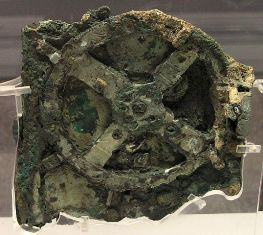
(main fragment).
The Antikythera mechanism, is thought to be an ancient mechanical calculator (also described as the first known mechanical computer designed to calculate astronomical positions. It was recovered in 1901 from the Antikythera wreck but its significance and purpose were not understood until about 40 years later. It is thought to have been built around 200 BCE to 100 BCE. Technological artifacts of similar complexity did not reappear until well over a thousand years later.
The mechanism is the oldest known complex scientific calculator. It contains more than 30 gears but may have contained far more originally, and is sometimes referred to as the first known analog computer, although its absolutely perfect manufacturing suggests that it may have had a number of predecessors during the Hellenistic Greek period which have not yet been found. The device is remarkable for the level of miniaturization and for the complexity of its parts, which is often compared to that of 18th century clocks.
Click here for a clip about a re-construction of the Antikythera mechanism
Professor Michael Edmunds of Cardiff University who led the most recent study of the mechanism said:
"This device is just extraordinary,
the only thing of its kind. The design is beautiful, the astronomy is exactly right. The way the mechanics are designed just makes your jaw drop.
Whoever has done this has done it extremely carefully...in terms of historic and scarcity value, I have to regard this mechanism as being more valuable
than the
Mona Lisa."
For more information please visit Decodingtheheavens.com
Number 9 = Laird Scranton's book Sacred Symbols of the Dogon: The Key to Advanced Science in the Ancient Egyptian Hieroglyphs.
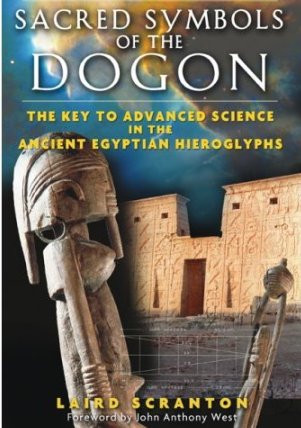
In The Science of the Dogon, Laird Scranton demonstrated that the cosmological structure described in the myths and drawings of the Dogon runs parallel to modern science--atomic theory, quantum theory, and string theory--their drawings often taking the same form as accurate scientific diagrams that relate to the formation of matter. Scranton also pointed to the close resemblance between the keywords and component elements of Dogon cosmology and those of ancient Egypt, and the implication that ancient cosmology may also be about actual science.
Sacred Symbols of the Dogon uses these parallels as the starting point for a new interpretation of the Egyptian hieroglyphic language. By substituting Dogon cosmological drawings for equivalent glyph-shapes in Egyptian words, a new way of reading and interpreting the Egyptian hieroglyphs emerges. Scranton shows how each hieroglyph constitutes an entire concept, and that their meanings are scientific in nature. Using the Dogon symbols as a 'Rosetta stone,' he reveals references within the ancient Egyptian language that define the full range of scientific components of matter: from mass less waves to the completed atom, even suggesting direct correlations to a fully realized unified field theory.
Click here for a clip of Laird Scranton speaking at the CPAK conference
Humboldt, that wise master, said: "First, people will deny a thing; then they will be little it; then they will decide that it had been known long ago."
Number 8 = Solar Boat/Funerary Boat of Cheops (Khufu) circa 2500BCE. The Pyramids Carbon-dating Project has dated the wood to c3400BCE!
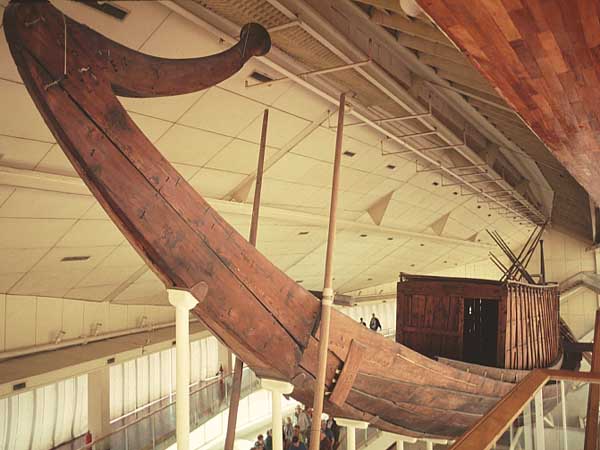
The current held view is that ancient people were unable to cross the oceans by boat and so all the civilizations evolved independently. When looking at a boat like the Solar boat which is over 4500 years old (found sealed into a pit in the Giza pyramid complex at the foot of the Great Pyramid of Giza) it seems hard to believe the Egyptians were not able to cross oceans.
Lets make a comparison between the Solar Boat and the ships Christopher Columbus sailed to reach the Americas. The Solar boat 43.6 m (143 ft) long and 5.9 m (19.5 ft) wide with an estimated displacement of more than 45 tons. Hundreds of pieces of shaped wood comprise the hull, which was held together with rope. Since wet wood swells and rope shrinks, the boat would become water tight. The boat had six pairs of long oars, one pair by the stern post serving as rudder oars.
The Santa Maria, was the biggest of the three ships used by Christopher Columbus on his maiden voyage across the Atlantic in 1492. He also had the Nina and Pinta with him on the journey. The Pinta was about 50 tons and 45 feet in length.
The Solar Boat was a riverboat without sails. However the Egyptians had full knowledge of the use of sails in fact they are credited with inventing them around 3300BCE!
The Egyptians built ships capable of carrying blocks of stone weighing hundreds of tons so they must have developed an understanding of displacement, stability and hull architecture as they used the same ships many times.
Number 7 = Teotihuacan ancient city in Mexico state, Mexico.
The Pyramid of the Sun at Teotihuacan is thought to be built in the first century AD. It has a base ten feet shorter (on each side) than the Great Pyramid of Cheops, and a volume of 2.5 million tons of stone and earth.
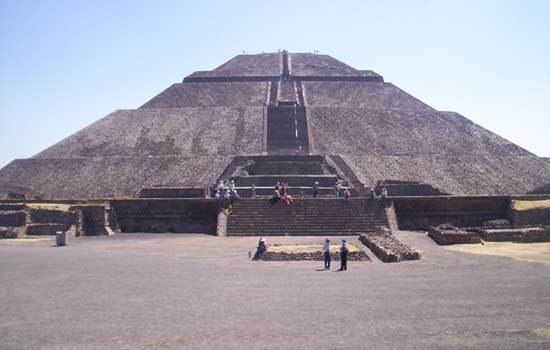
Teotihuacan was the largest pre-Columbian city in the Americas. The city covered more than 7,000 acres and at its height (150-450 AD) is estimated to have had a population estimated at around 200,000 at that time. Containing some of the largest pyramidal structures built in the Americas. Apart from the pyramidal structures, Teotihuacan is also known for its large residential areas, the "Avenue of the Dead", and a variety of colorful, well-preserved murals.
- No one knows how the site was named originally
- The people who built Teotihuacan are unknown
- Their language is unknown
- Mica sheets (up-to 30cm thick) were transported over 2000 Miles, significance and purpose unknown
- Pyramid of the Moon, Pyramid of the Sun, Street of the Dead, are all much later Aztec names
The culture that built it is also known as Teotihucan today and may have been the single most influential culture of Mesoamerica in regards both architecture and culture. The earliest buildings date to 200 BCE, but the largest structures were completed by 250 AD. Major architectural and decorative features include square stepped pyramids with rectangular panels on the sloping sides.
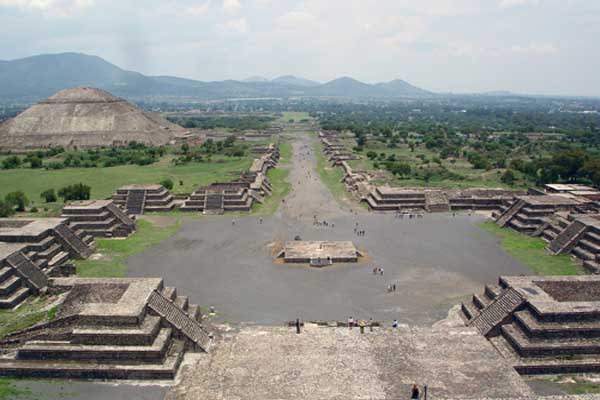
This highly planned city-layout suggests that the avenue may have been planned since its earliest phases of urbanization which is quite remarkable! With the axis of the city running east-west and north-south. The city appears to have declined through 500-600 AD and at some time in the 7th or 8th century portions of the city were burned, how and why archaeologists can only guess at.
The Aztec's and their allies discovered the massive monuments centuries later as their influence spread across central Mexico. The name of the city, "place of those who have the road of the gods" or alternately "place of the origin of gods" was given by these later cultures, who seem to have used it as a pilgrimage site.
Number 6 = Baalbek in Lebanon.
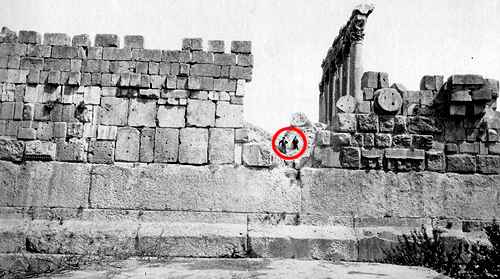
The known history of Baalbek dates back around 5000 years. Excavations near the Jupiter temple have revealed the existence of ancient human habitation dating to the Early Bronze Age (2900-2300 BCE).
The massive foundation platform of Baal Hadad is like no other structure in the world. It is over 90 meters long and nearly 60 meters wide and stands
10 meters high of the underlying bedrock. The Trilithon is composed of three stones each measuring 19 meters long x 4.2 meters wide x 3.6 meters broad. Cut from
natural crystalline limestone, from a quarry 1 km mile away, they weigh approximately 870 tons each. They have been raised to a height of 10 meters,
and been placed upon a layer of 19 similar blocks weighing
between 350 and 400 tons each.
"They are so accurately placed in position and so carefully joined, that it is almost impossible to insert a needle between them" Michel Alouf, Former curator of the Baalbek ruins.
An impressive feat of engineering - the Baalbek foundation stones shown above are the largest pieces of hewn rock on the face of the Earth. It is argued that the foundation stones are far older than previously thought and that Roman architects just simply added to an already existing structure. This seems quite apparent when looking at the photograph of the wall. The lower courses of rock are made of the massive blocks. The higher courses are constructed in the traditional Roman style we find all across Europe. No where else can we find the Roman's building with blocks of stone 400 tons plus. We also have records of most Roman construction projects and there is nothing mentioned about a massive project involving blocks of stone of this size.
Theories about the Trilithon and other megalith's
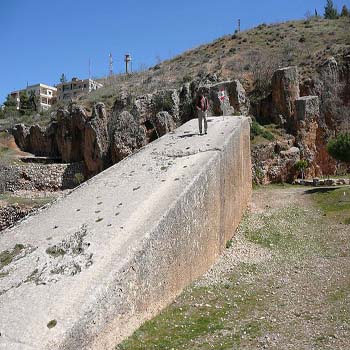
If we look around the internet we can find archaeologists carrying out experiments and trying to come up with credible conclusions on how stones of 800 tons or more were moved. However their experiments only go up to moving stones generally of a few tons, up to a maximum of 10 tons(see Roger Hopkins, Mark Lehner and Vince Lee) Due to the sheer scale of the task involved and man power required this is as far as they can take their experiments. There is a BIG difference in moving a stone of 10 tons to a stone of 1200 tons the largest at Baalbek(see pic Stone of pregnant woman). What would happen to a wooden roller when a block which measures an incredible sixty-nine feet by sixteen feet by thirteen feet ten inches and weighing in around 1200 tons is moved onto it? The Stone of pregnant woman is abandoned near the main platform at Baalbek and unfinished possibly destined for the same wall as the other massive blocks.
Some of the local population still maintain the story handed down by word of mouth over the years. They say that Baalbek's first city was built before the Great Flood by Cain, the son of Adam, whom God banished to the "land of Nod" that lay "east of Eden" for murdering his good brother Abel, and he called it after his son Enoch. The citadel, they say, fell into ruins at the time of the deluge and was later re-built by a race of giants under the command of Nimrod, the "mighty hunter" and "king of Shinar" of the Book of Genesis.
The limestone courses that make up the lower podium base - which, of course, includes the Trilithon - are heavily eroded by wind and sand, while the rest of the Temple of Jupiter still is made up of comparatively smooth surfaces. The same type of wind and sand erosion is noted on the huge limestone blocks used in many of the megalithic temple complexes around the northern Mediterranean coast, it can also be found in the cyclopean walls at Mycenaean Greece. The other megalithic complexes are dated by academics between 3000 and 6000 years old, the hypothesis that the lower courses of the outer podium wall at Baalbek pre-date the Roman temple complex by at least a thousand years is quite feasible.

Evidence for Roman transport capabilities from Roman records.
Elsewhere in the Roman empire, just a little over 300 metric tons seemed to be the limit, achievable only with the greatest difficulty. Transport of the 323 ton Laterano obelisk from Egypt to Rome spanned the reigns of three emperors. Clearly, the record setting engineers from Baalbek, had they existed, could have also managed the task of transporting the relatively light Lateran Obelisk.
The only other record we have of such vast undertakings to those at Baalbek are in Egypt see photo to the right. As the Obelisk stands now, it is nearly one third larger than any other ancient Egyptian obelisk ever constructed. Experts believe that if the Unfinished Obelisk were ever finished it would have measured about 120 feet and weighed almost 1,200 tons! Cracks developed while the stonemasons were still removing the surrounding living rock and so the project was abandoned. It does provide a lot of information into ancient Egyptian quarrying techniques.